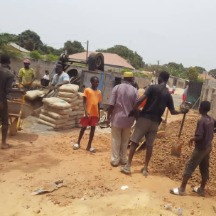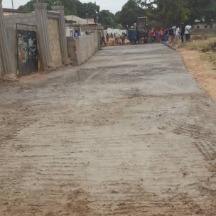Since 2002, The Port Of Harlem Gambian Education Partnership has provided opportunities for our readers to connect with Gambians by providing Gambian children an opportunity to attend school. Unlike industrialized nations where the populations are getting much older, The Gambia is much like other African nations with about 60 percent of the Gambian population being under the age of 25. Consequently, much of the world’s future will be African.
We have raised $705 of the $1,850 (38 percent complete) we need to raise by August 15. This includes getting 18 previous sponsors to renew their support now, find 6 new ones, or a combination of the two.
One of our goals this year is to have all the sponsorships in before school starts in September, so when the students get their locally made uniform, shoes, lunch money (for the year), exercise books, book rental, study fees, and a school bag, we can also create a video thank you to send each of the donors. This will save us and The Baobab Youth Development Association (BYDA) administrative cost and time. BYDA administers the program for us in The Gambia.
Road Project 86 Percent Completed
In January, we reported that BYDA completed paving 55 meters of a 180-meter (1/10 mile) road in their home village, Nema Kunka. In July, they completed an additional 100 meters. “We have 25m left,” reported BYDA president Buba Camara.
Camara added that three people died during the previous rainy season because they could not get to the hospital. This is why we chose to concrete this road Camara said. “This road goes to the hospital, connects people to the Latrikunda Market, and it floods,” he explained.
The road paving project will help mitigate the negative impact of flooding during this rainy season (generally June to October) by allowing cars to use the road sooner after the water resides and leave a concrete path versus leaving a soft, muddy rut. In the dry season, the ruts make travel slow as vehicles attempt to dodge the them.
The project began to take shape in 2019 after the National Road Authority completed the necessary survey. While the 2020 floods were devastating to many, 2021 is a dream come true for many of the villagers including those who funded the project by donating bags of cements, rocks, and sand.
Most of the labor was completed by volunteers, most under the age of 30. Funds also came from expatriates and others in Europe and America including via the Council of African Descendants, a mostly Afro-British group. (POHGEP did not fund this project.)










